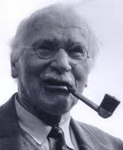 In Modern Man in Search of a Soul, C.G. Jung emphasizes the need for therapists to be flexible and to abandon dogma and preconceived notions in order to help patients who are stuck in a neurotic state:
In Modern Man in Search of a Soul, C.G. Jung emphasizes the need for therapists to be flexible and to abandon dogma and preconceived notions in order to help patients who are stuck in a neurotic state:
The human psyche is highly equivocal. In every single case we must consider the question whether an attitude or a so-called habitus exists in its own right, or is perhaps only a compensation for the opposite. I must confess that I have so often been mistaken in this matter, that in any concrete case I am at pains to avoid all theoretical presuppositions as to the structure of the neurosis and as to what the patient can and ought to do.
As far as possible, I let pure experience decide the therapeutic aims. This may perhaps seem strange, because it is usually assumed that the therapist should have an aim. But it seems to me that in psychotherapy especially it is advisable for the physician not to have too fixed a goal. He can scarcely know what is wanted better than do nature and the will-to-live of the sick person. The great decisions of human life have as a rule far more to do with the instincts and other mysterious unconscious factors than with conscious will and well-meaning reasonableness. The shoe that fits one person pinches another; there is no recipe for living that suits all cases. Each of us carries his own life-form—an indeterminable form which cannot be superseded by any other.
None of these considerations, of course, prevents our doing everything possible to make the lives of patients normal and reasonable. If this brings about a satisfactory result, then we can let it go at that; but if it is insufficient, then, for better or for worse, the therapist must be guided by the data presented through the patient’s unconscious. Here we must follow nature as a guide, and the course the physician then adopts is less a question of treatment than of developing the creative possibilities that lie in the patient himself.
What I have to say begins with the point where treatment ceases and development sets in. My contribution to psychotherapy is confined to those cases in which rational treatment yields no satisfactory results. The clinical material at my disposal is of a special nature: new cases are decidedly in the minority. Most of my patients have already gone through some form of psychotherapeutic treatment, usually with partial or negative results. About a third of my cases are suffering from no clinically definable neurosis, but from the senselessness and emptiness of their lives. It seems to me, however, that this can well be described as the general neurosis of our time. Fully two-thirds of my patients have passed middle age.
It is difficult to treat patients of this particular kind by rational methods, because they are in the main socially well-adapted individuals of considerable ability, to whom normalization means nothing. As for so-called normal people, I am even worse off in their regard, for I have no ready-made life-philosophy to hand out to them. In the majority of my cases, the resources of consciousness have been exhausted; the ordinary expression for this situation is: “I am stuck.” It is chiefly this fact that forces me to look for hidden possibilities. For I do not know what to say to the patient when he asks me: “What do you advise? What shall I do?” I do not know any better than he. I know only one thing: that when to my conscious outlook there is no possible way of going ahead, and I am therefore “stuck”, my unconscious will react to the unbearable standstill.
This coming to a standstill is a psychic occurrence so often repeated in the evolution of mankind, that it has become the theme of many a fairy-tale and myth. We are told of the Open Sesame to the locked door, or of some helpful animal who finds the hidden way. We might put it in this way: “getting stuck” is a typical event which, in the course of time, has evoked typical reactions and compensations. We may therefore expect with a certain degree of probability that something similar will appear in the reactions of the unconscious, as, for example, in dreams.
In such cases, therefore, my attention is directed more particularly to dreams. This is not because I am tied to the notion that dreams must always be called to the rescue, or because I possess a mysterious dream-theory which tells me how everything must shape itself; but quite simply from perplexity. I do not know where else to go for help, and so I try to find it in dreams.
Excerpt from the Carl Jung ebook, Modern Man in Search of a Soul